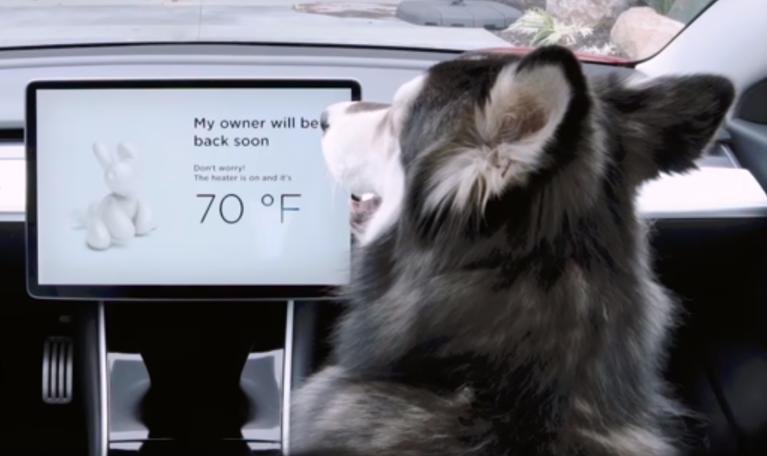Despite the incessant “transformation” drumbeat of the past decade, legacy companies are continuing to struggle to adapt to “digital gravity”. Management consultancy McKinsey, professional services firm KPMG and executive search specialists Egon Zehnder have all recently published global C-suite surveys which state that few companies have adapted their corporate strategies to meet new-generation competition or engaged in digital transformations at scale.

McKinsey’s global C-suite survey says legacy companies are facing “a major hit on revenue and profits”. And a joint KPMG-Egon Zehnder report focused on the automotive industry describes its transformation efforts as being “painfully slow”, and limited to superficial factors such as CEOs appearing at new model launches in jeans and locating innovation divisions in hip cities such as Berlin.
These consultants would say this, of course. Surveys such as these are classic tools to illustrate issues and drum up interest in the solutions these firms offer. Nevertheless, it is hard to argue with the conclusions.
The car industry “seems to be clinging to its old ways,” according to the KPMG-Egon Zehnder researchers, who surveyed more than 500 global industry executives. “Leaders recognize the unprecedented challenge now facing them but have yet to establish the digital‐ready culture needed to meet it.”
McKinsey says digitization is having a significant negative impact on the profits of incumbents through two loop effects: digital entrants competing with incumbents through disruptive models, and incumbents responding to disruption and creating more intense competition with each other.
“While 90% of companies indicated that they are engaged in some form of digitization, only 16% said their companies have responded with a bold strategy and at scale. Likewise, only 30% of companies are focusing on new ways to bundle demand or re-segment their market. The good news is if your company has yet to fully and adequately engage with digital disruption or has begun going down a path that is not yielding positive results, it’s not alone. Thus, leaders in most industries still have a window for putting a bold digital strategy in place. But it may not stay open long.”
The KPMG-Egon Zehnder report says that automotive “leaders clearly perceive a new force pulling the automotive industry towards unfamiliar ground – we call this force ‘digital gravity. But the industry seems to be clinging to its old ways. Our research has found that despite an awareness of the challenge facing it, the automotive industry has still not undertaken the work that will enable it to respond to this new force”.
In contrast to the old-school auto firms, Tesla is an obvious, emblematic, game-changing disruptor. You can question Elon Musk’s mercurial behavior, his history of over-promising (will the Tesla Semi happen?), the company’s debt burden, the cult-like hype from the fans, and whether the business will become a global high-volume player with a fully autonomous fleet of “robotaxis“, but Tesla is leading the electric vehicle revolution. Its legacy rivals have only recently started acknowledging that the internal combustion engine (ICE) has entered the twilight zone.
And whilst the technology story is compelling, what is also remarkable is that the holistic Tesla experience is a genuine differentiator. For example, unlike the traditional industry, prices are fixed. Influential automotive journalists who buy Tesla cars comment that they are refused discounts. Everybody pays the same in-market price (although Tesla’s pricing can shift, it is universally applied). Picture the peace of mind this statement provides, “nobody has paid less than I did”. No need to engage in the games the conventional car dealers, their financiers and distributors play, with deceptive tactics such as low-interest finance deals still common.
The Internet is awash with positive Tesla stories (and some negatives, of course). Check out this one from a fan claiming that the true cost of ownership is close to negligible, especially when compared to conventional ICE cars sold and maintained by the old-school legacy auto companies and their dealer networks who must move metal at all costs (including ethics) to stay viable. Of course, the traditional players question if Tesla can remain somewhat pure as it transitions from a premium niche actor to a volume seller. For now, however, the Tesla ownership experience is superior and a significant factor in the building of what has become an iconic global brand without mainstream advertising. As a blogger wrote:
“Tesla does not spend millions of dollars in a traditional ad campaign. They let you and I discuss it, rave about it, hate on it, or rejoice in the spirit of going electric in a Tesla, be the catalyst to a viral and brilliant marketing campaign. At the end of the day, Tesla advertising is free.”
Recently owners told Musk, via Twitter, that they wanted to be able to leave their dogs safely in their cars. So, Tesla delivered an over-the-air update that made available “dog mode”. This news has been amplified online by the Tesla fans, industry analysts and self-appointed YouTube commentators who track the company’s every move. Tesla’s simple 27-second video promoting the feature has had has several million views:
McKinsey summarizes its survey findings by explaining that “taking both the intensity of the response and the degree of integration into account, we find that barely 8% (of companies) have both responded offensively and integrated their digital strategy fully into the corporate strategy. This is a huge missed opportunity: Our analysis suggests that only a successful response that is both bold and integrated fully can yield revenue and profit trajectories that are higher post-digitization than pre-digitization”.
The KPMG-Egon Zehnder report emphasizes the need to “pursue and foster a new culture … at all levels of the organization (not IT alone) – a top-down approach alone will not work.
“Let culture play a major role throughout the organization. Without a spirit of openness, curiosity and learning, companies will struggle to create a blend of the old and the new.
“Leaders must also change their own mindset. These steps are impossible without a serving, inquisitive and humble leadership style that extends to the very top of the organization. Although strong executional direction is still needed, establishing a new culture of openness, curiosity and the power to connect is essential. The spirit of collaborative leadership must prevail – and can ultimately enable an organization to accomplish something new and better.”
